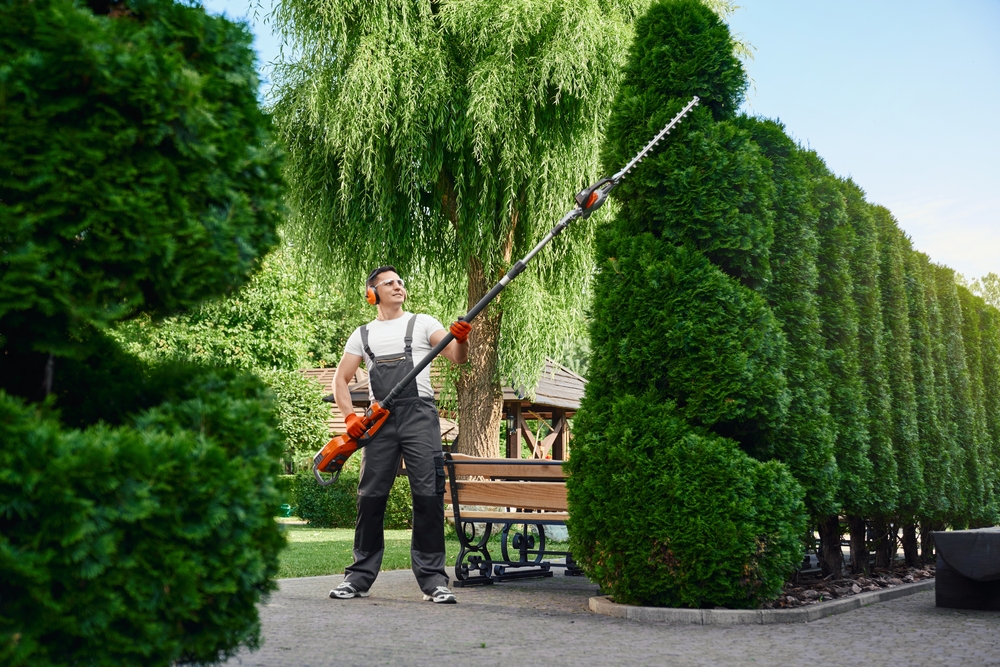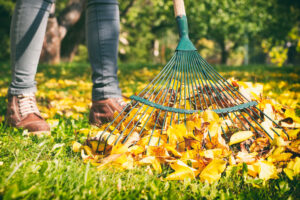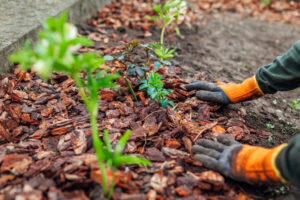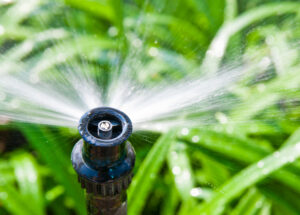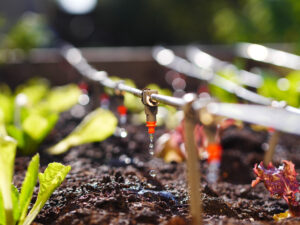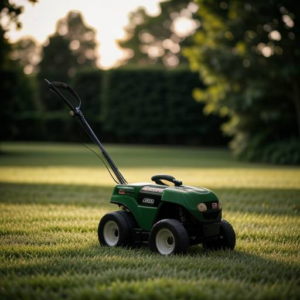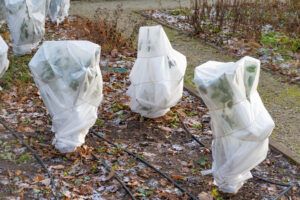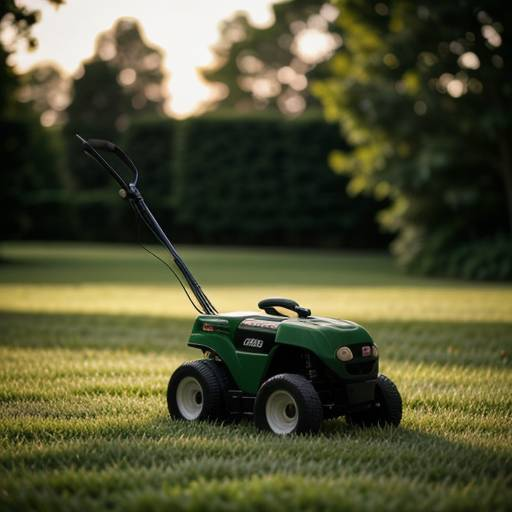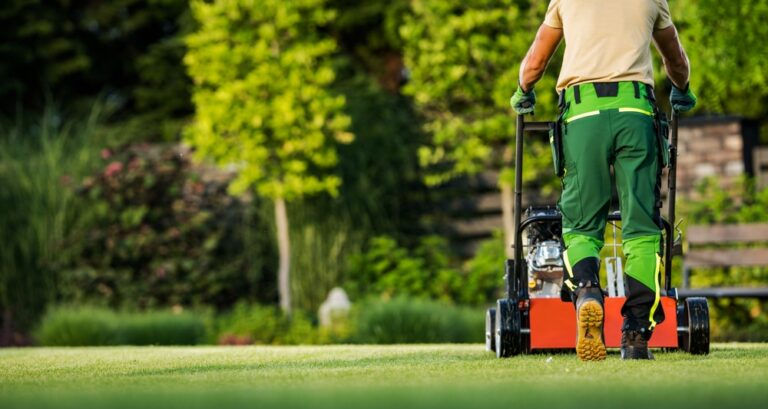Importance of seasonal landscaping maintenance
Maintaining your landscape throughout the year is essential for its health, beauty, and longevity. Seasonal landscaping maintenance ensures that your outdoor space remains vibrant and well-kept. It involves tasks such as cleaning up debris, pruning, planting, and protecting plants from harsh weather conditions. By regularly tending to your landscape, you can enhance its curb appeal, create an inviting atmosphere, and increase the value of your property.
This guide aims to provide you with a comprehensive understanding of seasonal landscaping maintenance. It will cover the basics of landscape design principles, help you recognize the impact of different climates on landscaping, and offer month-by-month tasks and tips for maintaining your landscape. Additionally, you will find troubleshooting advice for common landscape problems, guidance on eco-friendly landscaping practices, and resources for further learning.
Landscaping Basics
Before diving into maintenance tasks, it’s important to assess your landscape’s unique needs. Consider factors such as soil type, sun exposure, water availability, and existing plant varieties. This understanding will help you make informed decisions about design, plant selection, and maintenance routines.
Landscape design principles
Good landscape design involves principles such as balance, proportion, unity, variety, and focal points. Strive for a harmonious arrangement of plants, hardscape elements, and outdoor structures. Balance the visual weight of different elements, create proportionate relationships, provide variety through plant textures and colors, and establish focal points to draw attention to specific areas.
Impact of different climates on landscaping
The climate in which you live greatly influences your landscaping choices. Some plants thrive in hot and dry climates, while others prefer cooler and moist conditions. Consider the temperature range, rainfall patterns, and potential weather extremes in your area when selecting plants and planning your maintenance schedule.
Seasonal Landscaping Maintenance
Spring Landscape Maintenance
March:
- Cleanup of winter debris: Remove fallen branches, leaves, and other debris from your lawn and planting beds.
- Early blooming plant care: Prune early-flowering plants, remove dead wood, and apply fertilizer if necessary.
April:
- Pruning and trimming: Trim overgrown shrubs and trees to maintain their shape and promote healthy growth.
- Preparation of planting beds: Clear out weeds, add organic matter, and cultivate the soil to prepare for new plantings.
May:
- Planting annuals and perennials: Select and plant flowers suitable for your climate, ensuring proper spacing and soil preparation.
- Mulching: Apply a layer of mulch around plants to conserve moisture, suppress weeds, and regulate soil temperature.

Summer Landscape Maintenance
June:
- Plant care: Water plants deeply and regularly, especially during hot and dry periods. Apply appropriate fertilizers based on plant needs.
- Pest control: Monitor for pests and take necessary measures to control them, such as using organic pest control methods or seeking professional assistance.
July:
- Midsummer pruning: Trim back excessive growth, remove dead flowers, and shape shrubs as needed.
- Maintaining hardscape features: Inspect and clean hardscape elements like pathways, patios, and fences. Repair any damage or deterioration.

August:
- Heat stress management: Ensure plants receive adequate water during heatwaves and provide shade or protection for sensitive plants.
- Late-summer planting: Choose heat-tolerant plants for late-season color and interest. Prepare planting areas and provide proper care for new additions.
Fall Landscape Maintenance
September:
- Beginning of fall clean up: Remove spent flowers, trim back perennials, and clear away fallen leaves to maintain a tidy appearance.
- Early fall planting: Plant cool-season annuals, bulbs, and trees suitable for fall planting in your region.
October:
- Leaf cleanup: Regularly remove fallen leaves from lawns, beds, and pathways to prevent suffocation of grass and reduce pest and disease risks.
- Preparing plants for winter: Insulate vulnerable plants by applying mulch around their base and wrapping them with burlap or other protective materials.
November:
- Final clean up: Clear out remaining debris, cut back dead plant material, and prepare the landscape for winter dormancy.
- Protecting sensitive plants: Shield frost-sensitive plants with protective covers or move them to sheltered locations.
Winter Landscape Maintenance Plan
December:
- Protecting plants from winter damage: Shield plants from harsh winds, heavy snow, and freezing temperatures using burlap, stakes, or protective wraps.
- Hardscape care: Remove snow and ice from walkways and driveways promptly to prevent slips and falls. Avoid using salt-based deicers that can harm plants.

January:
- Winter garden design: Plan and design your landscape for the upcoming spring. Research and order seeds, bulbs, and plants for future plantings.
- Planning for spring: Assess your landscape’s needs, create a budget, and outline the tasks required for spring maintenance.
February:
- Late-winter pruning: Prune dormant trees and shrubs to remove dead or damaged branches, improve structure, and stimulate healthy growth.
- Preparing seed starting: Clean and organize gardening tools and containers for seed starting indoors. Purchase or start seeds for early spring planting.
Monthly Landscaping Calendar
| Month | Tasks |
|---|---|
| March | Cleanup of winter debris, early blooming plant care |
| April | Pruning and trimming, preparation of planting beds |
| May | Planting annuals and perennials, mulching |
| June | Plant care (watering, fertilizing), pest control |
| July | Midsummer pruning, maintaining hardscape features |
| August | Heat stress management, late-summer planting |
| September | Beginning of fall clean up, early fall planting |
| October | Leaf cleanup, preparing plants for winter |
| November | Final clean up, protecting sensitive plants |
| December | Protecting plants from winter damage, hardscape care |
| January | Winter garden design, planning for spring |
| February | Late-winter pruning, preparing seed starting |
Season-specific landscaping tips
Spring:
- Focus on cleaning up debris and preparing the landscape for new growth.
- Take advantage of early blooming plants to add color and interest.
- Gradually increase watering as temperatures rise.

Summer:
- Regularly water plants, particularly during hot and dry periods.
- Stay vigilant against pests and address any infestations promptly.
- Pay attention to the maintenance of hardscape features to ensure safety and aesthetics.

Fall:
- Prepare the landscape for winter by removing dead plant material and protecting vulnerable plants.
- Take advantage of cool-season planting opportunities for autumnal colors.
- Keep up with leaf cleanup to prevent lawn suffocation and minimize pest issues.
Winter:
- Protect plants from winter damage by providing insulation and windbreaks.
- Prioritize hardscape care, such as snow and ice removal, to ensure safety.
- Use the winter months to plan and prepare for future landscaping projects.
Landscaping Troubleshooting
Identify and address common landscape problems.
Pest infestations: Monitor plants for signs of pests such as aphids, mealybugs, or slugs. Use natural or organic pest control methods when possible. Consult with a local garden center or professional for specific pest identification and treatment options.
Disease outbreaks: Look for symptoms of plant diseases like fungal infections or bacterial issues. Remove and destroy affected plant parts and consider using disease-resistant plant varieties. Practice proper sanitation by cleaning tools to avoid spreading diseases.
Weed management: Regularly inspect and remove weeds from your landscape to prevent competition for nutrients and water. Use mulch or other weed control methods to suppress weed growth. Apply herbicides selectively if necessary, following label instructions.
Soil issues: Conduct soil tests to assess nutrient levels and pH. Amend the soil as needed by adding organic matter, such as compost or aged manure. Ensure proper drainage to prevent waterlogged soil conditions.
Emergency landscape repair and replacement
Storm damage: After severe weather events, assess the landscape for any damage to trees, shrubs, or structures. Remove broken or hazardous limbs and branches. Seek professional assistance if large-scale repairs or tree removal is required.
Plant replacement: If plants have suffered extensive damage or have died, consider replacing them with suitable alternatives. Choose plants that are well-suited to your climate, soil conditions, and desired aesthetic.
Eco-friendly Landscaping Practices
Incorporating sustainable elements into your landscape
Water conservation: Install efficient irrigation systems, such as drip irrigation or rainwater harvesting systems. Use water-wise planting techniques, such as grouping plants with similar water needs together. Mulch beds to reduce water evaporation and suppress weed growth.
Energy efficiency: Use landscaping to create shade and reduce heat gain in your home. Plant trees strategically to provide natural cooling. Consider using pergolas, arbors, or trellises to shade outdoor living areas.
Soil health: Practice organic gardening methods to promote healthy soil. Use compost and natural fertilizers to enrich the soil and support beneficial microorganisms. Avoid using synthetic chemicals that can harm soil health and water quality.
Conservation strategies in Landscaping
Native plant selection: Incorporate native plants into your landscape design. Native plants are adapted to the local climate, require less water and maintenance, and provide habitat for native wildlife. They also help conserve biodiversity.
Wildlife-friendly landscaping: Create a habitat for birds, butterflies, and beneficial insects by providing food sources, water features, and nesting areas. Avoid using pesticides that can harm beneficial insects and disrupt the ecological balance.
Rainwater management: Design your landscape to capture and use rainwater efficiently. Implement rain gardens or bioswales to collect and filter runoff. Install permeable paving materials to allow water infiltration and reduce stormwater runoff.
Native Plant Landscaping
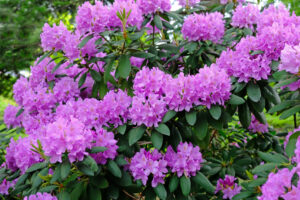
Native plant landscaping focuses on incorporating indigenous plants into your landscape design. Native plants offer numerous benefits, including:
- Adapting to local climate and soil conditions reduces the need for excessive watering and fertilization.
- Providing food and habitat for native wildlife, supporting local ecosystems.
- Enhancing biodiversity and promoting the preservation of indigenous plant species.
- Adding aesthetic value through unique foliage, flowers, and seasonal interest.
By choosing native plants, you can create a sustainable and resilient landscape that thrives with minimal intervention.
Regular, seasonal landscape maintenance ensures your outdoor space remains healthy, beautiful, and functional throughout the year. It promotes the longevity of your plants, enhances curb appeal, and provides a welcoming environment for you and your guests. By addressing specific tasks and challenges associated with each season, you can enjoy a well-maintained landscape that brings joy and satisfaction.
Landscape maintenance is not just about routine tasks but an opportunity for continuous improvement and creative expression. Take time to evaluate your landscape, experiment with new plant varieties, and explore sustainable practices. With thoughtful planning and a commitment to ongoing care, you can transform your outdoor space into a personal oasis that reflects your style and values.

